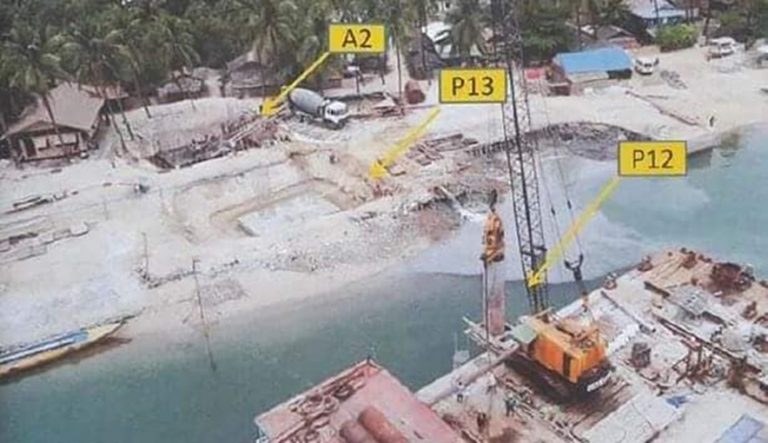By Kyaw Htike Soe
Infrastructural development of a region plays a vital role in helping the country’s GDP increase and uplifting the standard of living of poor people. Development of infrastructural projects provides economic growth, creates job prospects for local residents and lifts people out of the poverty. The road transport network plays an important role in fostering economic and social development of a region, improving socioeconomic status of local people, and speeding up the flow of trade.
Reliable road transport networks could support businesses of the locals and promote their socioeconomic status. Some foreign companies show interests in building urban development projects and constructing roads, bridges and deep seaports in Ayeyawady Region and Rakhine State. Sustainable development of the road transport networks would help Ayeyawady Region and Rakhine State reachable without consuming much time. Being located in a strategic position of Rakhine State’s road transport network, Gwa Township connects some townships in other regions and states in the country through Ayeyawady Region and links other areas in Rakhine State via Thandwe Township. Majority of local people in Rakhine State’s Gwa Township rely on motor road for travelling.
Residents in Gwa Township use the 146-mile long Yangon-Ngathainggyoung-Gwa Road, a major road linking Ayeyawady Region, a delta area full of rivers, creeks and fertile lands with Rakhine State, an area rich in natural resources such as oil and gas reserves, for travelling to other areas. The road connecting Yangon City via Gwa Township with famous Ngapali Beach leads through the vast, evergreen flatlands in Ayeyawady Region before crossing the the Rakhine Yoma Mountain Range. The road crossing the Rakhine Yoma Mountain Range has many curves and is vital to link Rakhine State with other regions and states in the country. The distance between Yangon and Ngapali Beach, one of the most famous beach resorts in Myanmar, is around 230 miles and the travelling time from Yangon to Ngapali Beach is about 10 hours’ drive.
In order to solve road transport barriers encountered by people with travel difficulties and boost infrastructural development in Ayeyawady Region and Rakhine State, A coastal road stretching 170 miles is being built at a cost of around Ks. 300 billion. Construction of bridges also plays a crucial role in building the coastal road. Upon completion of the coastal road that connects Chaungtha and Ngwehsaung Beaches, Gaw Yin Gyi Island in Ayeyawady Region and some beach towns in Rakhine State, it is expected to take around six hours to travel from Yangon to Ngapali Beach. Officials from the Ministry of Construction take the grievances of local people into consideration in order to lessen negative effects on the environment when constructing the coastal road.
Of the bridges to be built along the coastal road, the Gwa-Makyayngu Bridge under construction will be a major bridge connecting Ayeyawady Region and Rakhine State. Construction of the Gwa-Makyayngu Bridge began on 18 November 2019 and the estimated cost of the project including its approaches is Ks. 9.32 billion. The structure is being built by Special Bridge Group-8 of the Department of Bridge under the Ministry of Construction. The bridge is of a reinforced facility and measures 1,399 ft. in length, 24 ft. in width, and has the capacity to withstand 75 tonnes of weight. Its clearance is about 20 ft. and waterway under the bridge is 85 ft. and has a 3 ft. long pedestrian walkway on each side. The project has been about 25 per cent finished so far, said Daw May Ma Tun, an in-charge engineer from the bridge construction site.
Once completed, the bridge would serve as a new trade route between Ayeyawady Region and Rakhine State and residents from nearby areas would be able to use the facility in all seasons with greater ease. With the new road link, travellers from all corners of the country would be able to visit tourist attraction sites such as beaches and islands in Gwa and Thandwe Township by road, and Rakhine State would likely see tourism boom. In addition, the bridge would contribute to development of trade in the area, facilitate swift flow of commodities and reduce transportation charges for local people.



